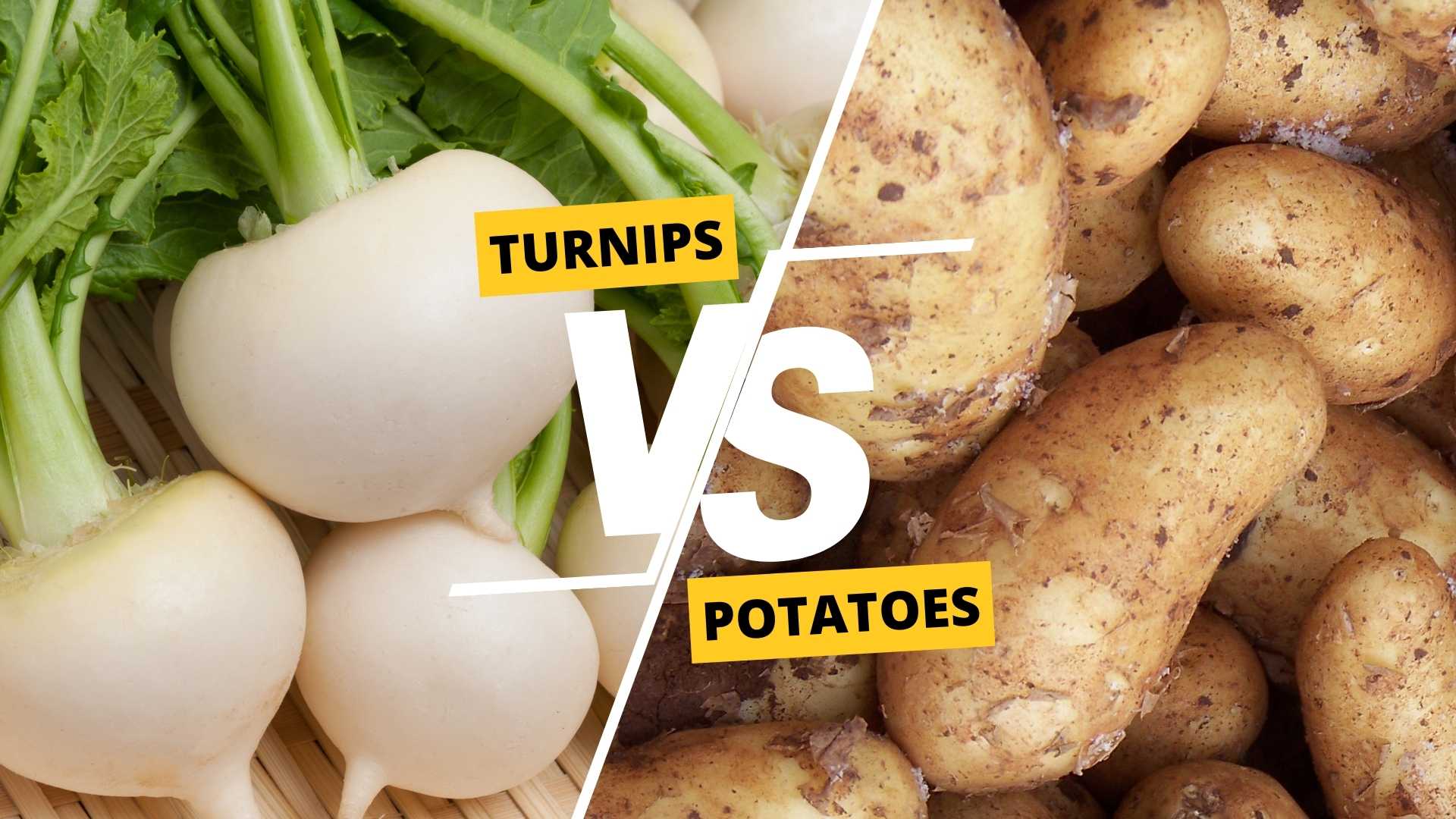When it comes to choosing healthy foods, it’s important to consider nutrient density. Root vegetables are a great source of vitamins, minerals, and fiber, making them an important part of a balanced diet. Two popular root vegetables are turnips and potatoes, both of which offer unique nutritional benefits. In this article, we’ll compare the nutritional content of turnips and potatoes, as well as their taste, culinary uses, and environmental impact.
Comparison of Turnips vs Potatoes
Nutritional Comparison
When it comes to macronutrient content, turnips, and potatoes are fairly similar. Both are low in fat and protein and high in carbohydrates. However, there are some key differences in their micronutrient content. For example, turnips are a great source of vitamin C, providing over 40% of the daily recommended intake in just one cup of cooked turnips. Potatoes, on the other hand, are a good source of vitamin B6, potassium, and manganese. Additionally, both turnips and potatoes are good sources of fiber, which is important for digestive health and weight management.
One key difference between turnips and potatoes is their glycemic index (GI), which measures how quickly a food raises blood sugar levels. Turnips have a lower GI than potatoes, meaning they’re less likely to cause a spike in blood sugar. This makes turnips a good choice for people with diabetes or anyone trying to manage their blood sugar levels.
Health Benefits
Both turnips and potatoes offer a range of health benefits. Turnips are rich in antioxidants, which help protect against cell damage and prevent chronic diseases like cancer and heart disease. They also have anti-inflammatory properties, which can help reduce inflammation throughout the body and improve immune function. Additionally, turnips are a good source of dietary fiber, which can promote digestive health and help prevent constipation.
Potatoes also offer a range of health benefits. They’re a good source of vitamin C, which is important for immune function and collagen production. Potatoes also contain resistant starch, which acts like fiber in the body and can help improve gut health. Additionally, the skin of potatoes contains antioxidants, so it’s important to leave the skin on when cooking and eating potatoes.
Taste and Texture
When it comes to taste and texture, turnips and potatoes have some notable differences. Turnips have a slightly bitter taste and a firm, crunchy texture when raw. When cooked, turnips become sweeter and softer, with a texture similar to potatoes. Potatoes, on the other hand, have a mild, starchy taste and a soft, fluffy texture when cooked. Both turnips and potatoes can be cooked in a variety of ways, including boiling, roasting, and mashing.
Culinary Uses
Turnips and potatoes are both versatile vegetables that can be used in a variety of dishes. Turnips are a staple in many European cuisines, including Scottish neeps and tatties and French pot-au-feu. They can be roasted, boiled, mashed, or grated into salads or slaws. Turnips also work well in soups and stews, where their slightly bitter flavor adds depth to the dish.
Potatoes are even more versatile than turnips and can be used in almost any type of cuisine. They can be boiled, roasted, mashed, fried, or baked. Popular potato dishes include French fries, mashed potatoes, potato salad, and potato soup. Potatoes also work well in curries, casseroles, and as a side dish for meat or fish.
Environmental Impact
Both turnips and potatoes are relatively sustainable crops, requiring little irrigation and fertilizer. However, there are some environmental considerations to keep in mind when choosing one over the other. Potatoes are one of the most widely cultivated crops in the world, and large-scale potato farming can have negative environmental impacts, such as soil erosion and water pollution. Additionally, potatoes are often grown using pesticides and fertilizers, which can harm local ecosystems and contribute to climate change.
Turnips, on the other hand, are a less commonly grown crop and may be more environmentally sustainable in some cases. Turnips are often grown as a cover crop, meaning they’re planted in between other crops to help improve soil health and reduce erosion. However, like any crop, turnips can have negative environmental impacts if grown using pesticides and other harmful chemicals.
Accessibility and Affordability
Both turnips and potatoes are widely available in most regions and are generally affordable. However, there may be some variations in price and availability depending on where you live. In some regions, turnips may be more expensive or less commonly found in grocery stores than potatoes. It’s important to consider both the cost and accessibility of these vegetables when making purchasing decisions.
Potential Drawbacks
While turnips and potatoes offer a range of health benefits, there are some potential drawbacks to consider. Some people may be allergic to turnips or potatoes, which can cause digestive symptoms like bloating and diarrhea. Additionally, some potato preparations, such as french fries or potato chips, can be high in calories and unhealthy fats. People with diabetes should also be careful when consuming potatoes, as their high carbohydrate content can cause a spike in blood sugar levels.
Conclusion
Overall, both turnips and potatoes offer a range of health benefits and are versatile vegetables that can be used in a variety of dishes. When choosing between the two, it’s important to consider nutritional content, taste and texture, culinary uses, environmental impact, accessibility and affordability, and potential drawbacks. Ultimately, both turnips and potatoes can be healthy additions to a balanced diet and can be enjoyed in moderation as part of a healthy lifestyle.
